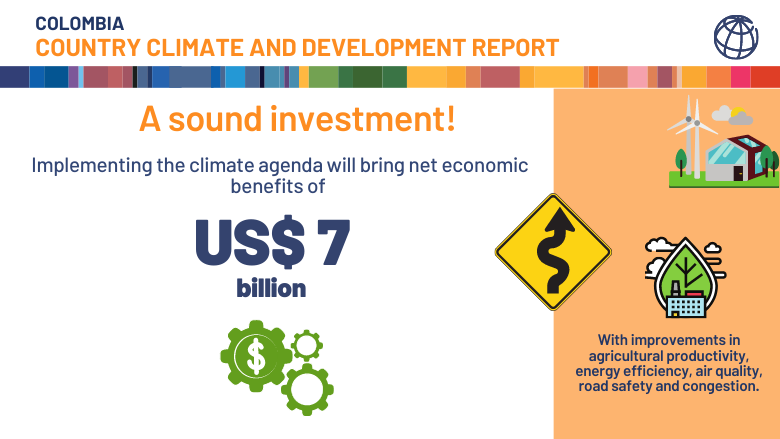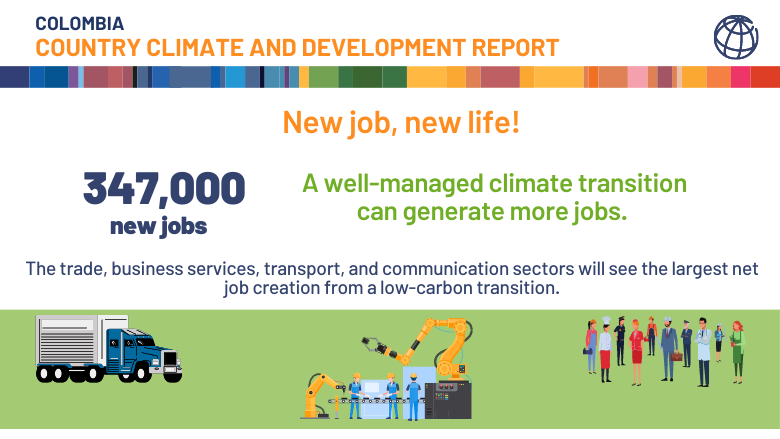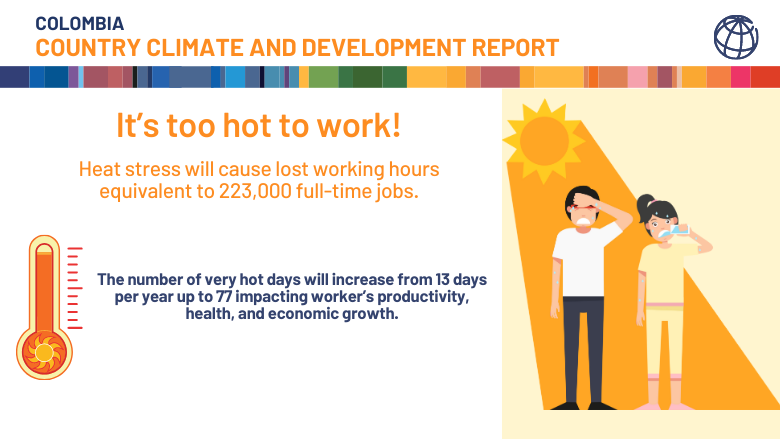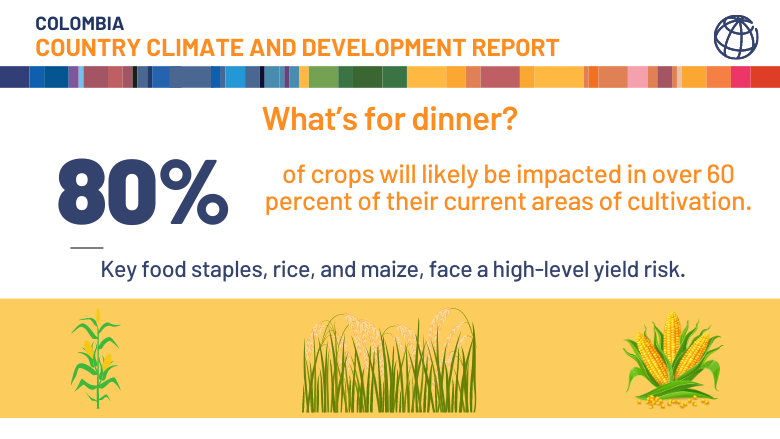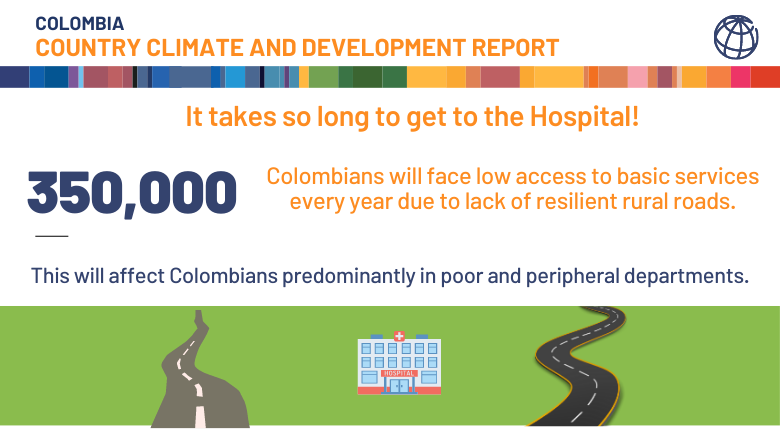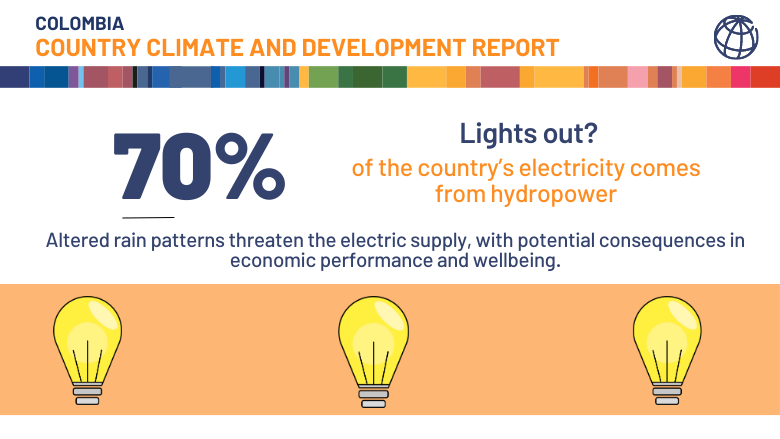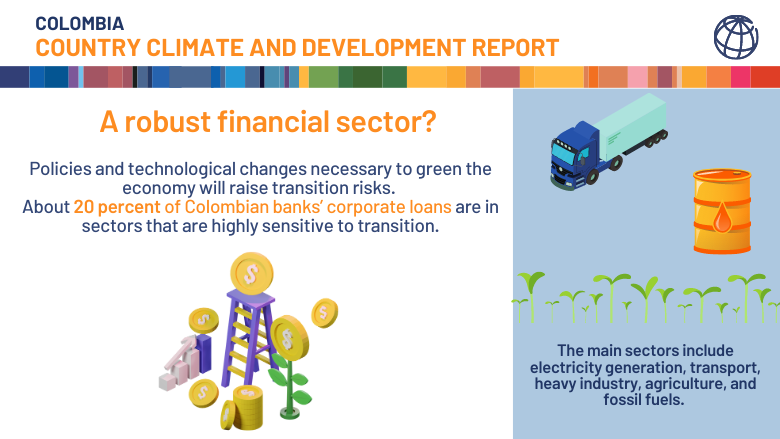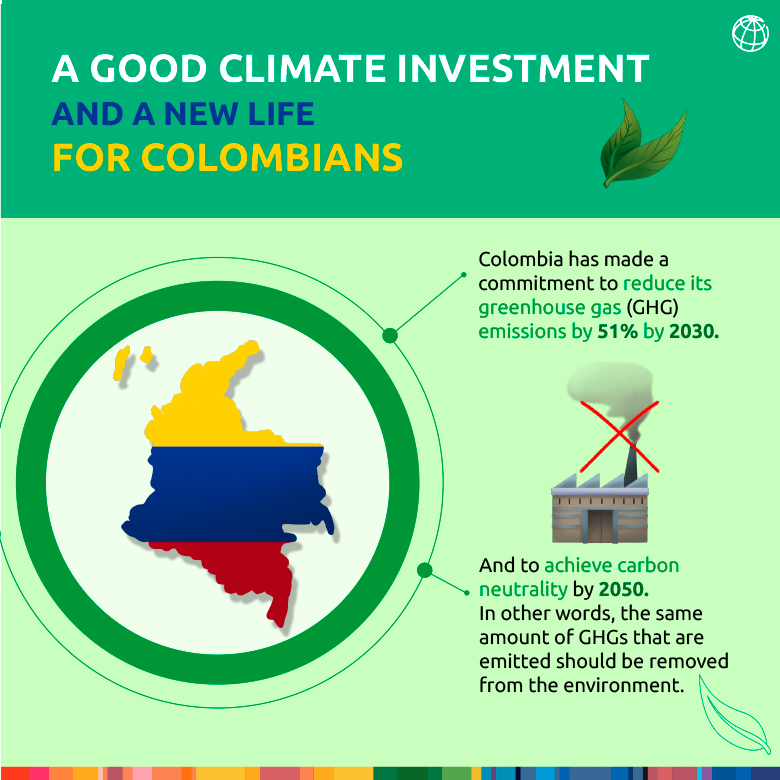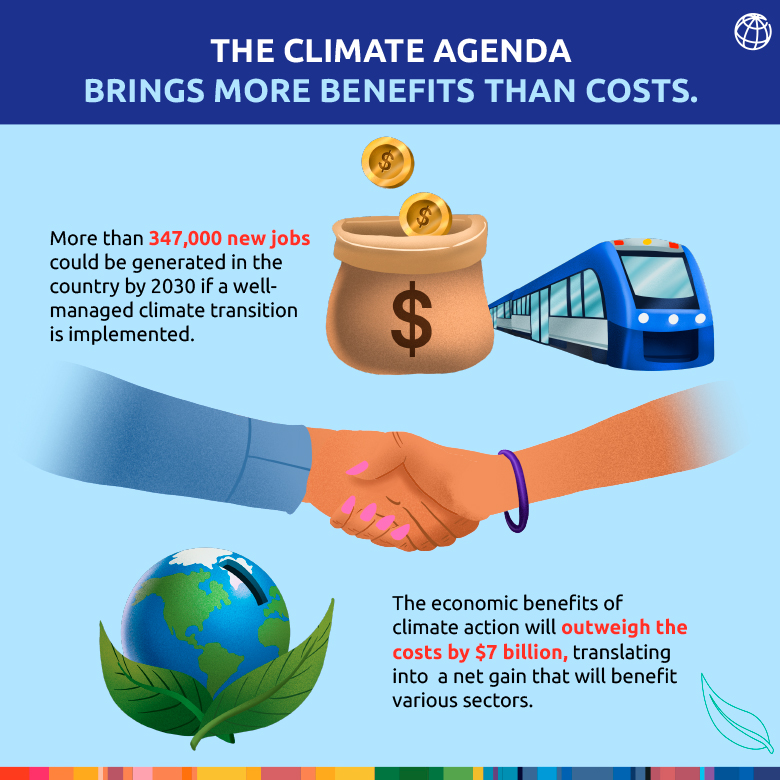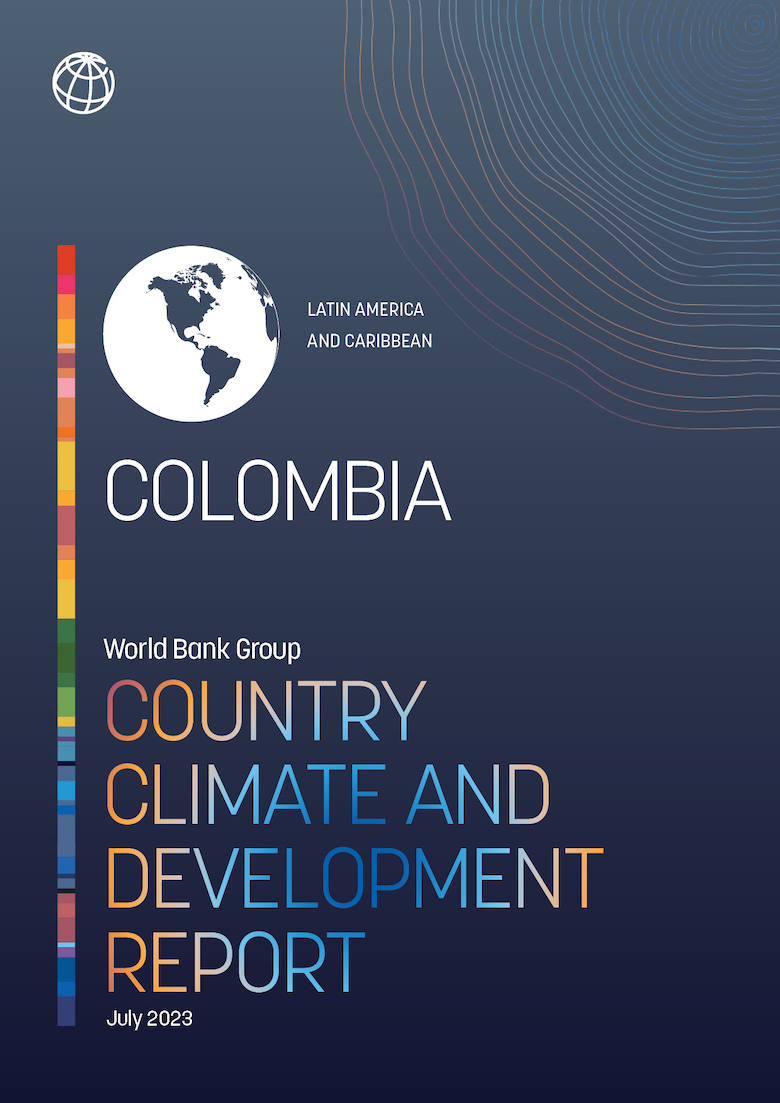Colombia faces three critical climate transitions as it navigates a complex path forward towards a richer and more equitable future. First, it will need to manage the transition from a climate-vulnerable to a climate-resilient economy. Second, it will need to navigate a transition to a low-carbon economy, in the context of its stated net zero goal for 2050, which places the country among the climate ambition leaders in Latin America. Third, Colombia will need to engineer a transition in a changing world that will demand less of its primary exports, oil and coal, and more green products.
The country is highly vulnerable to climate change. Even if global temperatures increase only 1.5°C, the number of people affected by floods in Colombia would triple, while the number of very hot days will soar almost six-fold by 2050, and climate-caused infrastructure disruptions could affect 60 percent more Colombians by 2050. Moreover, as a fossil fuel producer, by 2050 Colombia stands to lose 10 percent of its export revenues, up to 6 percent of its government revenues, and up to 8 percent of its GDP as a result of global decarbonization.
Although the country's contribution to global emissions is relatively low, Colombia’s overall GHG emissions have been on the rise driven primarily by transport, agriculture, waste, and energy industries, and more recently, by deforestation. However, the World Bank Group Country Climate and Development Report found no tradeoffs between Colombia’s climate and development agendas, as actions to achieve them are mutually reinforcing. In fact, the country can build a wealthier, greener, and more resilient future if it shifts to a development model based on climate action, innovation, and productivity growth.
Why is it important to accelerate climate action in Colombia?
- Deforestation threatens important biodiversity and results in a loss of key ecosystem services such as temperature regulation, water retention, and food provision.
- Climate change is expected to further stress already low productivity in the agriculture sector, which accounts for 60 percent of employment in rural areas.
- Disaster and climate risks represent by far Colombia’s largest contingent liability, with a potential impact on economic activity of up to 4.4 percent of its GDP.
- The country is highly exposed to critical infrastructure damage, which generates interruptions in basic services such as the generation and transmission of electricity, transportation, and the drinking water supply.
- The wellbeing of Colombians is at stake, as increased heat stress, a higher prevalence of vector-borne diseases and worse air quality will impact health, productivity and learning outcomes.
Colombia's opportunities for resilient and low carbon development
The World Bank Group Country Climate and Development Report provides policy recommendations to achieve a resilient and equitable development that will require swift and far-reaching reforms across a wide spectrum of issues. First, improve coordination across agencies and levels of government. Second, dramatically reduce deforestation, transform the agriculture sector to become climate-smart, invest in resilient and low-carbon transport and energy systems, ensure social protection systems effectively buffer climate impacts on the vulnerable, and invest in a just transition as demand for fossil fuels declines. Third, increase fiscal revenues to enable the government to pay for its share of climate investment. And fourth, put the entire economy, especially the private sector, in a position to do its part in moving Colombia along its climate transition.
While the cost of implementing the climate agenda is not negligible, doing so will bring net economic benefits of US$ 7 billion between 2023 and 2050 and higher growth and household incomes by 2050, with an estimated additional investment of US$ 92 billion. In fact, climate action will not contradict Colombia’s broader development agenda of raising standards of living, but it will add more urgency to necessary reforms. Moreover, with the right reforms, the private sector could deploy up to $74 billion of the additional investment needed for climate action.
The World Bank Group stands ready to support Colombia’s climate transition by identifying opportunities for investment, policy reform, capacity building, analytics, and mobilizing financing. Find out more in the full report here.
